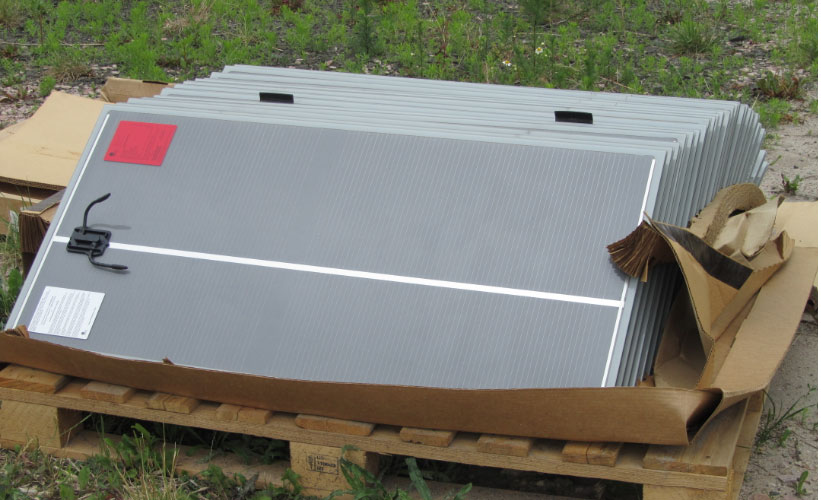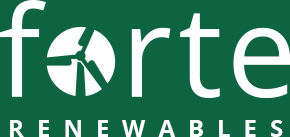Selecting Best Solar PV Technologies Today To Mitigate Production Losses Tomorrow
Preamble: Investors’ Solar PV Technology Challenge
Since most large Utility Scale PV Systems (50MWp plus) have not completed their lifetime, it has been investors´ challenge to decide which technologies will satisfy their performance requirements and achieve expected ROI. In this Insight series we provide advice on how to manage this challenge.
Solar is the fastest growing technology for energy generation and has grown from small scale, low-capacity factor projects to utility scale projects and is expected to be the main energy source by 2050. Previously a niche technology investment, Solar PV has boomed in the past 5 years and technology manufacturers are seeking to offer innovations to service the rapidly increasing market demand. Due to the large number of system configuration possibilities, the identification of the best technological solution can make large differences to project investment returns.
Choice and quality of PV Modules, Tracking Systems and Inverters Technologies are evolving on a monthly basis. When combined with the time lag between permitting application and construction commencement the risk of “sticking” with an inferior technology needs to be weighed with “twisting” to the latest evolution of
technology. Selecting best System Configuration and quality management to ensure that investors specifications are adhered to is key to optimising performance and LCOE of your Solar PV project.
This Insight Series
We, at Forte Renewables, are sensitive to the risks on the expected lifetime performance, critical financial results and bankability of its client´s Solar PV Systems and will, in this series of blogs/insights, discuss critical issues, observed in main components of a Solar PV System, that need to be considered in the
design, selection and procurement of an Utility Scale Solar PV System.
We start our Insight series with “Solar PV Modules Selection and Quality Management” and in the following weeks will address issues related to inverters, tracking systems and other technology considerations.
Insight # 1: Solar PV Modules Selection and Quality Management
Solar PV Technologies are rapidly improving and there is now a large variety of PV Module Technologies and types which have made the selection more challenging to investors e.g. P-Type, N-Type, Mono or Multi Crystalline, PERC X PERT Cells, Mono X Bi-Facial, Half X Third Cell, Thin Films, etc. Product launches of Innovative technology to increase power and efficiency while offering lower degradation and temperature coefficients are being brought to market by PV Module Manufacturers at regular intervals to satisfy demands of the market.
The present blog/insight is focused on the Quality and Suitability of Solar PV Modules which can jeopardize the ROI of a Solar PV System.
Source of Performance Issues and Testing Options
Issues or failures on Solar PV Modules can appear due to manufacturing problems such as cell ribbon misalignment, poor/cold soldering among others that, together with LID (Light Induced Degradation) are the main issues that need to be tested by FAT (Factory Acceptance Tests) or SAT (Site Acceptance Tests) before installation starts.
Although FATs results (mostly provided by the manufacturer without purchasers presence) are useful to obtain it is nevertheless considered that benchmarking technologies versus climate and site conditions verified by SATs and periodic inspections/testing is considered best practice to verify performance compliance.
Since LID is a problem that appears in the very first hours of exposure to solar radiation the sooner the module is tested the better. Experience shows that, in many installations, measured LID rates have been significantly higher than those claimed by the manufacturers.

LeTID and PID
On the other hand, other forms of degradation such as LeTID (Light and elevated Temperature Induced Degradation), PID (Potential Induced Degradation) and the regular Degradation rate (due to aging of PV Modules) are those which are more difficult to estimate or measure since they occur during the long-term operation.
LeTID is the degradation that affects PV Cells during the combination of high temperatures and exposure to solar radiation. This phenomenon is still under research by many Laboratories and there is no regulatory framework or standard procedures for quantifying its effects.
PID, as the name suggests, occurs during the operation of the PV System resulting in a leakage of current between the semiconductor and other(s) element(s) of the module such as glass, frame, structures, etc. resulting in the reduction of MPP (Maximum Power Point). Many recent PV modules are said to be PID free or have an inbuilt PID Resistance. There are other ways to resolve PID effects through Anti-PID inverters (will be discussed later by the Inverter Blog). For older PV Systems, which are suffering PID, there are Anti-PID Devices that can also be installed with attested results.
Aging Degradation
The Degradation that worries investors more is the regular Degradation due to Module aging since it cannot be measured or estimated before System installation.
Degradation Rate (RD), also called Performance Loss Rate, is a parameter specified by the manufacturer. It is normally in the range of 0.5% per operational year. It is expected to be linear but, field experience has shown that constant RD is unrealistic and unexpected Performance drops have been observed in many operational PV Systems.
Nonlinear drops in performance affect contractual agreements between operation and maintenance (O&M) contractors and PV asset managers where key performance indicators (KPIs) are agreed to in order to quantitatively monitor the performance of the PV System. Such LCOE differences and significant uncertainties in PV performance models highlight the importance of understanding and preventing
nonlinear degradation in order to reduce financial risks.
Estimating RD is not trivial. Accelerated aging or other sophisticated models (rather than conventional statistical methods) have been developed by important Laboratories for measuring degradation of PV Modules of different Technologies, during many year of testing.
Top Tips for PV Module Selection
In order to minimise Manufacturing and Degradation Issues Forte Renewables has studied all forms of degradation of Solar PV Modules since those related to manufacturing problems and pre-installation (e.g.LID) until PID and RD, being prepared to support its clients in the difficult PV Module selection process. Our top tips for PV module selection (dos and don’ts) are:
1. CAPEX should not be the only aspect to be considered in a PV System Project but long term LCOE, Warranty and O&M costs are also very important aspects for the financial results of a PV System.
2. Since PV Module technologies react differently to Climate Conditions, besides Solar Radiation, all Climate information (Temperature, Humidity and Wind) need to be considered in the PV System Design and PV Module selection.
3. LID Specifications need to be checked (some Technologies are essentially LID free), Since LID is a short-term Degradation in P-Type Chrystalline Modules, samples of PV Modules should be tested in factory or at the site, before installation starts.
4. Site characteristics such as Albedo and Soiling, are also very important for a successful long-term
results of a PV System. These phenomena can and should be measured during Project development for Energy Prediction purposes.
5. Quality Benchmarks of potential PV Modules are very important during design and Procurement phases.
6. Supply and O&M Agreement should consider the above Degradation Forms for ROI.
If you are interested in this topic, please visit www.ForteRenewables.com
or contact us on +31 627 146 905
Copyright©2021 Forte Renewables

